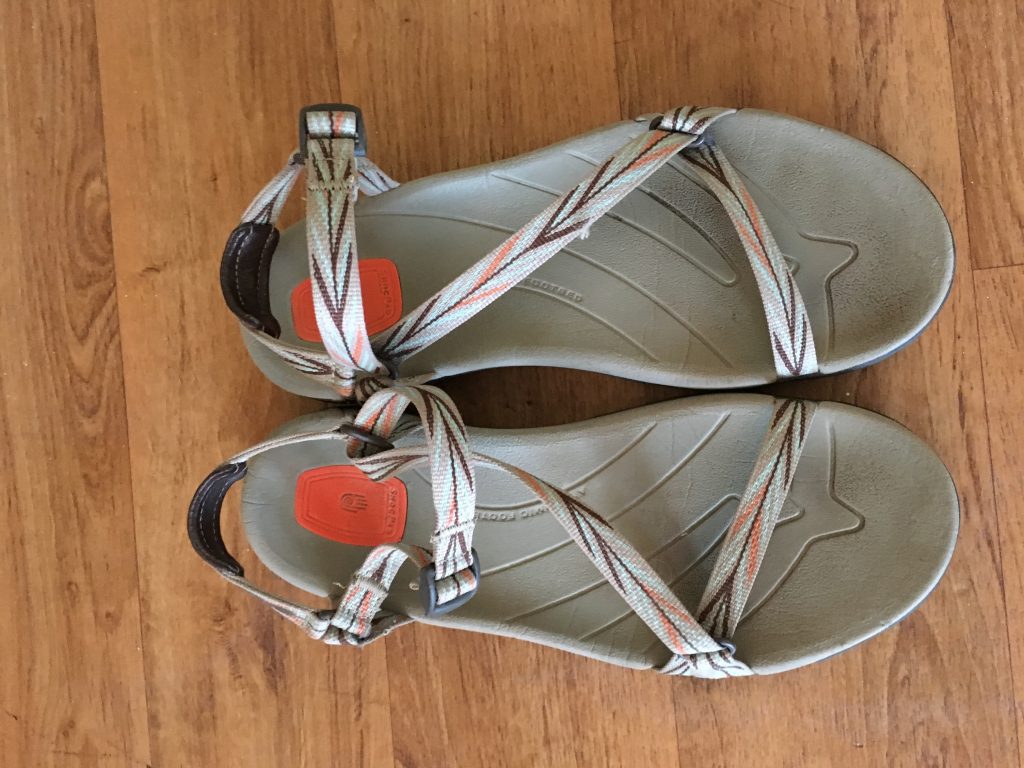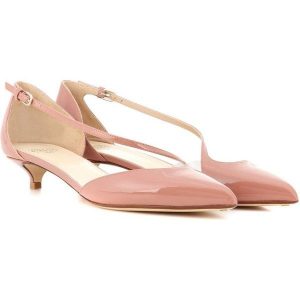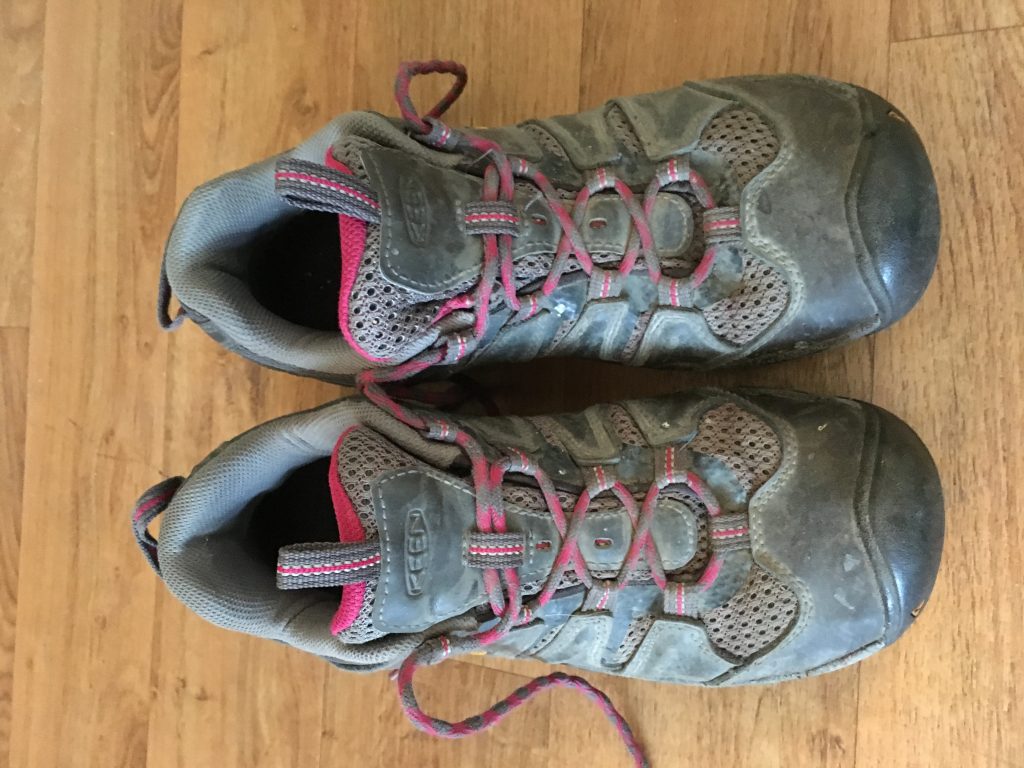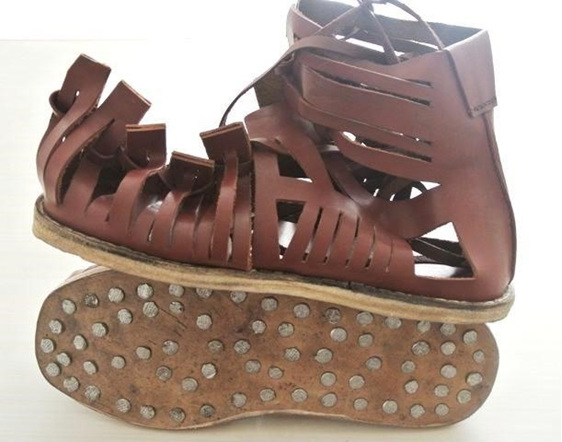
Choosing Shoes
What shoes did you put on this morning?
Did you have to make a decision about your shoes, or did you automatically reach for a specific pair?
We may not think a lot about the shoes we wear (although, some people do think a lot about the shoes they wear). Many people in the world don’t own shoes. And this was true during the first century AD when Paul wrote his letter to the church in Ephesus.

Typically we think everyone wore sandals – something like my Teava sandals here. And moderately affluent people did, but many or even most people did not even have somethings this basic.
The ideal was something more like this:

Pretty, but not practical.
Of course, the ultimate and true first century sandal did not look like this pump, but it was about as practical. They were not even worn outside. When the owner of such shoes went for a visit, these precious sandals were carried by servants.
This is the practice John the Baptist is referring to in Matthew 3:11?
“I indeed baptize you with water unto repentance, but He who is coming after me is mightier than I, whose sandals I am not worthy to carry.”
But it is another type of shoe that Paul uses as part of an illustration at the latter part of his letter to the Ephesians:
“Wherefore take unto you the whole armor of God, that ye may be able to withstand in the evil day, and having done all, to stand. . . .”
Ephesians 6:13
The armor of God includes shoes, and these are no ordinary shoes.

We often imagine that Roman soldiers wore something like my Teava sandals above. In fact, they wore something more like my hiking shoes. Except theirs did not have a solid upper and the thick soles were embedded with hobnails. They were called Caligae. These are the shoes Paul is referring to in Ephesians 6:15. They were shoes for a serious endeavor and were only worn by soldiers.

So, which shoes are you wearing?
Feet and Shoes
The purpose of shoes is primarily to protect your feet. A secondary function is to enable you to do more (like walk) than you could do without them. Much like what horseshoes do for horses.
Display was not originally a function of shoes, and the shoes Paul is referring to in his letter had nothing to do with display.
In the Jewish culture, the foot symbolized possession or domination.
Consider Caleb’s request in Joshua 14:9 for his faithful report after spying out the land of Canaan for 40 days.
So Moses swore on that day, saying, “Surely the land where your foot has trodden shall be your inheritance and your children’s forever, because you have wholly followed the Lord my God.”
Caleb was entitled to the land that he had walked on. The act of his foot making contact with the area gave him right to it.
In the book of Ruth is example of how shoes became an extension of the foot.
Returning to Israel after losing her husband and sons, Naomi has only her daughter-in-law Ruth to provide for her. God leads Ruth to glean in the field of a near relative of Naomi, Boaz. It was the custom for the nearest relative of a childless widow to take her for his wife and raise up children in the name of the deceased. Boaz agrees to do this for Ruth, but he must first see if a near relative will perform this duty.
In Ruth chapter 4, Boaz meets with the nearer relative of Naomi and Ruth than himself. Look at the exchange in verse 4 through 8; especially note verse 7.
4 “And I thought to inform you, saying, ‘Buy it back in the presence of the inhabitants and the elders of my people. If you will redeem it, redeem it; but if you will not redeem it, then tell me, that I may know; for there is no one but you to redeem it, and I am next after you.’ ” And he said, “I will redeem it.”
5 Then Boaz said, “On the day you buy the field form the hand of Naomi, you must also buy it from Ruth the Moabitess, the wife of the dead, to perpetuate the name of the dead through his inheritance.”
6 And the close relative said, “I cannot redeem it for myself, lest I ruin my own inheritance. You redeem my right of redemption for yourself, for I cannot redeem it.”
7 Now this was the custom in former times in Israel concerning redeeming and exchanging, to confirm anything: one man took off his sandal and gave it to the other, and this was a confirmation in Israel.
8 Therefore the close relative said to Boaz, “Buy it for yourself.” So he took off his sandal.
Giving your shoe was a symbolic act of relinquishing possession. It was much more practical than cutting off one’s foot.
Therefore, shoes became and extension of the foot, which makes sense considering the first function of a shoe — protection of the foot. You protect your possessions.
Feet were also the primary means of transportation and therefore of spreading information. This is why Isaiah wrote:
How beautiful upon the mountains Are the feet of him who brings good news.
Who proclaims peace,
Who brings glad tidings of good things,
Who proclaims salvation,
Who says to Zion, “Your God reigns!”
Isaiah 52:7
The feet are beautiful (and by extension the shoes) because they are the means of bringing a message. As there was neither internet nor mail service in Isaiah’s day.
So, what shoes are you wearing?
Symbolic Use of Clothing
Shoes have more of a symbolic function than simply their association with feet though. In Galatians 3:27 Paul states, “For as many of you as were baptized into Christ have put on Christ.” There should be an external change in us from our internal commitment.
The two women of Revelation 12 and 17 are contrasted primarily by what they are wearing.
Now a great sign appeared in heaven: a woman clothed with the sun, with the moon under her feet, and on her head a garland of twelve stars.
Rev. 12:1
The woman was arrayed in purple and scarlet, and adorned with gold and precious stones and pearls . . . .
Rev. 17:4
Clothing represents character. Or as James Laver put it, ” Clothing is the furniture of the mind.”
With that in foundation set, next time we will take a closer look at these special military shoes.



